"Film features trees and leaves, ducks, water, a statue, 2 women wearing coats, a bridge and some house-like structures. The garden was filmed in the spring/summer and fall" Archives of Ontario.
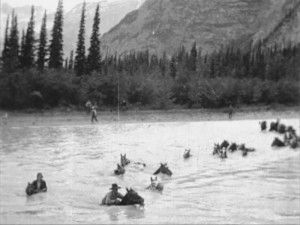
"Shows an expedition through northeastern British Columbia by Mary Gibson Henry, Pennsylvania botanist and plantswoman. Mrs. Henry was interested in the legendary "Tropical Valley" of northern B.C., where the warmth of hot springs supposedly fostered vegetation not otherwise found in the region. The film was shot in the summer of 1931, during the first of four such journeys she made in the period 1931-1935. Mrs. Henry was accompanied by her husband, Dr. J. Norman Henry; four of her children; topographer Knox McCusker (of the Dominion Topographical Surveys Branch); Dr. B.H. Chandler, a surgeon friend; and outfitter S. Clark, as well as various wranglers. The second and third reels of this three-reel film show the party of 16 travelling by pack-train, crossing rivers, caching food, and fishing, as well as some camp scenes. At an encampment of "Grand Lake Indians" on the Tetsa River, they engage Charlie Macdonald, the chief's son, to guide them to Toad Hot Springs on the Toad River, but they do not proceed north to Liard Hot Springs. On the return trip south, stops include St. Paul's Lake, Henry River, and Lake Mary and Lake Josephine [named after the Henry's daughters]; these place names do not seem to have become official. Following the Peace River, they arrive at Hudson's Hope (having travelled 800 miles in 79 days), and continue down river to Taylor Flats." (BC Archives)
The title given above is a supplied title based on the film contents. The actual title of the film is unknown, since it survives as reels 2 and 3 of 3 -- and the actual title and credits (if any) would likely have been at the start of reel 1.
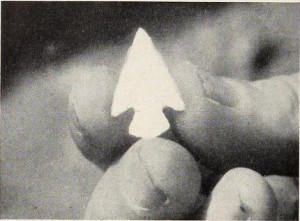
"Adventure on the Colorado, by Al Morton, comprises 1,600 feet of film and (at twenty four frames a second) forty eight minutes of screen time. In it, six men in two boats travel down the Colorado River from Moab, in southeastern Utah, to Lee's Ferry, in northern Arizona. Taking fifteen days, the trip covered some 300 miles, forty of which were through cataracts already claiming twenty nine lives. These are the bare and simple facts of the case. But these facts cannot begin to tell the story of Mr. Mortons epic adventure. And mind you, we are not concerned here with the breath taking dangers of the trip itself — although these alone were awesome and challenging. We are concerned only with Mr. Morton's filming adventures and the bright, indomitable story of them as recorded so stirringly in his film. That story is one of inflexible resolve against all compromise, even in the face of well nigh impossible circumstance. At one point in the picture, Mr. Morton shows us a rugged and precipitous approach to the river known as "Hole in the Rock." It was through this narrow passage that, years ago, a little band of Mormons, sent to colonize the San Juan country, brought their wagons and their belongings. In laces where the chasm had narrowed so sharply as to block the cavalcade, they dismantled the wagons and packed them through on their backs. For they had set out to cross the river — and cross it they did. Mr. Morton's filming resolve must have been of that same high order — almost religious in its intensity. As the down-river journey grew ever more arduous, you waited with sympathetic understanding for those not quite perfect scenes which the incredible conditions must surely dictate. You were ready to make allowances, to accept the imperfect as relative perfection --under the circumstances. Not so with Mr. Morion. There was no compromise with quality in the Morton picture plan. He set out to film the river, and film it he did. Adventure on, the Colorado is a moving and splendid epic, recording both a gallant adventure and a glowing achievement." Movie Makers, Dec. 1947, 513.
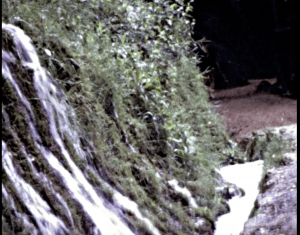
Un recorrido por el Monasterio de Piedra y por las cascadas cercanas retratado mediante un juego de música y agua que cae por las cascadas.
A tour by the Stone Monastery and the nearby waterfalls through a game between music and water falling from the waterfalls.
"A process film with interititles about the spring capture of alewives, an andromadous fish." oldfilm.org
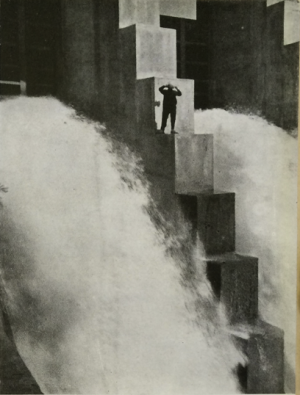
"A soggetto"/ Fiction
Alta tensione,
"Alta tensione, regla e trama di Arrigo Colombo, scenario di Arnaldo Baldaccini, fotografia di Bruno Salvadori, interpreti Arnaldo Baldaccini e Aldo Frosi. La pellicola si svolge in una centrale elettrica, ma pur presentando a sfondo della vicenda il funzionamento della centrale stessa, mostra il lavoro nelle sue fasi piu salienti in rapporto e in contrasto con un dramma umano, sottolineando i pericoli e i sacrifici ehe richiede la produzione della Corrente elettrica. In molte sequenze si deve notare lo sforzo dei realizzatori per raggiungere il fine, in qualche caso particolarmente arduo, come nelle scene notturne del salvataggio sulle dighe. Delicate le scene del risveglio del protagonista, con la rappresentazione della serenita della natura al mattino, e assai adeguata nel complesso la interpretazione." - Il Ventuno 26 (Review of the G.U.F. of Venice) March 1935.
High tension,
"High Tension, direction and plot by Arrigo Colombo, scenery by Arnaldo Baldaccini, photography by Bruno Salvadori, actors Arnaldo Baldaccini and Aldo Frosi. The film takes place in a power plant, but while presenting the story of the plant’s operation as the background, it shows the work in its most salient phases in relation to and in contrast with a human drama, underscoring the dangers and sacrifices that the production of electricity requires. In many sequences, one must note the effort of the filmmakers to achieve these ends, in some cases particularly arduous, as in the night scenes of the rescue on the dams. The scenes of the protagonist’s awakening are delicate with the representation nature’s serenity in the morning, and the acting is very fitting." - Il Ventuno 26 (Review of the G.U.F. of Venice) March 1935.
"Filmmaking brothers Sidney and Harold Preston present a beautifully shot record of time and place, taking us to the great Lancashire seaside resort in the interwar years. Whether enjoying the bird's eye view from the top of the tower, trying out the Pleasure Beach rides, or just befriending the donkeys on the beach, the three generations of the Preston family are clearly having a grand day out." (BFI Player)
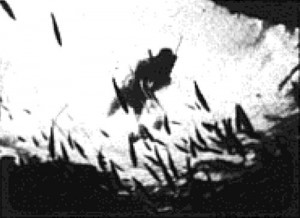
"Andros Blue Holes had to be in color to show us that the Blue Holes are really blue. J. Benjamin of Toronto takes us on 18 minutes of the most fascinating underwater filming ever attempted. The beauty and mystery of the Blue Holes far outweigh the dangers involved in exploring them. Very entertaining and very educational" PSA Journal, Nov. 1969, 57.
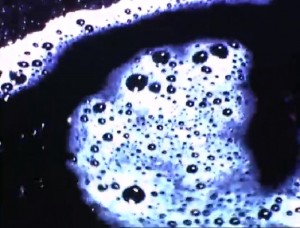
"Aqua Viva, as its name suggests, is a study of water in motion. To state it thus baldly, however, cannot reveal the true cinematic beauty of Allan Hammer's swirling patterns of light and shadow, executed with consistent success under the most difficult exposure conditions. Yet more important than Mr. Hammer's technical competence is his imaginative perception of small moments of great loveliness. Such scenes, however, because of their very delicacy, tend always to lose their effectiveness in large doses. Aqua Viva as a production leans toward excess length." Movie Makers, Dec. 1950, 466.
A film documenting various excursions during a holiday in the Lake District of the UK.
Total Pages: 11